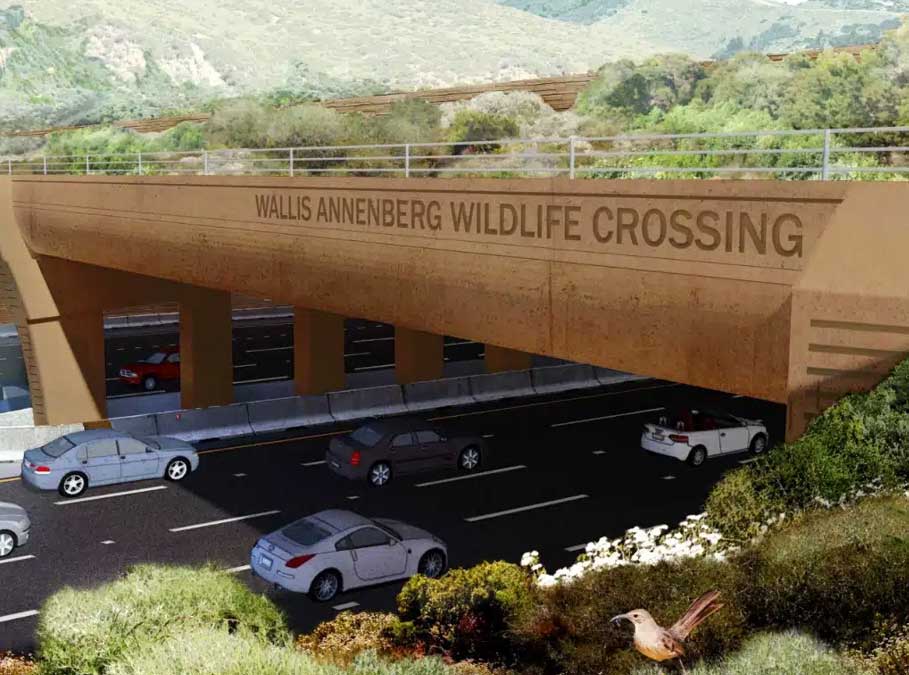The Wallis Annenberg Eco Bridge, under construction in California, will be the world’s largest, allowing wildlife to move between habitats divided by the highway.
World’s largest Eco Bridge, a titanic work taking shape above Highway 101 in California weighs as much as 14 African elephants and towers over ten lanes of incessant traffic.
A 92 million dollars project that is more than just an overpass: it is admission of guilt of humanity and, at the same time, an attempt to repair the damage inflicted on wildlife.
Ecoponte, a colossus that weighs on April 17, construction crews installed the first girder of the ecobridge that will span America’s busiest highway. Beth Pratt, Regional Director of the National Wildlife Federation for California, described the experience as “cathartic.”
This eco-bridge, is not just any little bridge: it is a gentle giant of engineering. The beams (enormous “boxes” of reinforced concrete) are the first level of a scaffolding which will ultimately measure 64 meters by 53. Each individual beam weighs between 126 and 140 tons; heavier (as mentioned) than 14 African elephants put together.
It will take 30 to 45 days to install all 82 necessary beams. A titanic task that requires closing the highway for five hours every night.
A global model of coexistence
This eco-bridge will allow puma, gray foxes, coyote e mule deer to safely cross that highway that had cut their natural habitat in two, separating the Santa Monica Mountains from the Sierra Madre mountain range.
The 92 million euro project will be completed in 2026, and will become a global model for wildlife conservation in urban environments.
In a world where ecological catastrophes seem to pile up one after the other, this eco-bridge that literally “vegetates” above the Californian asphalt is a promise, a green dream of coexistence that, beam after beam, is finally taking shape.









